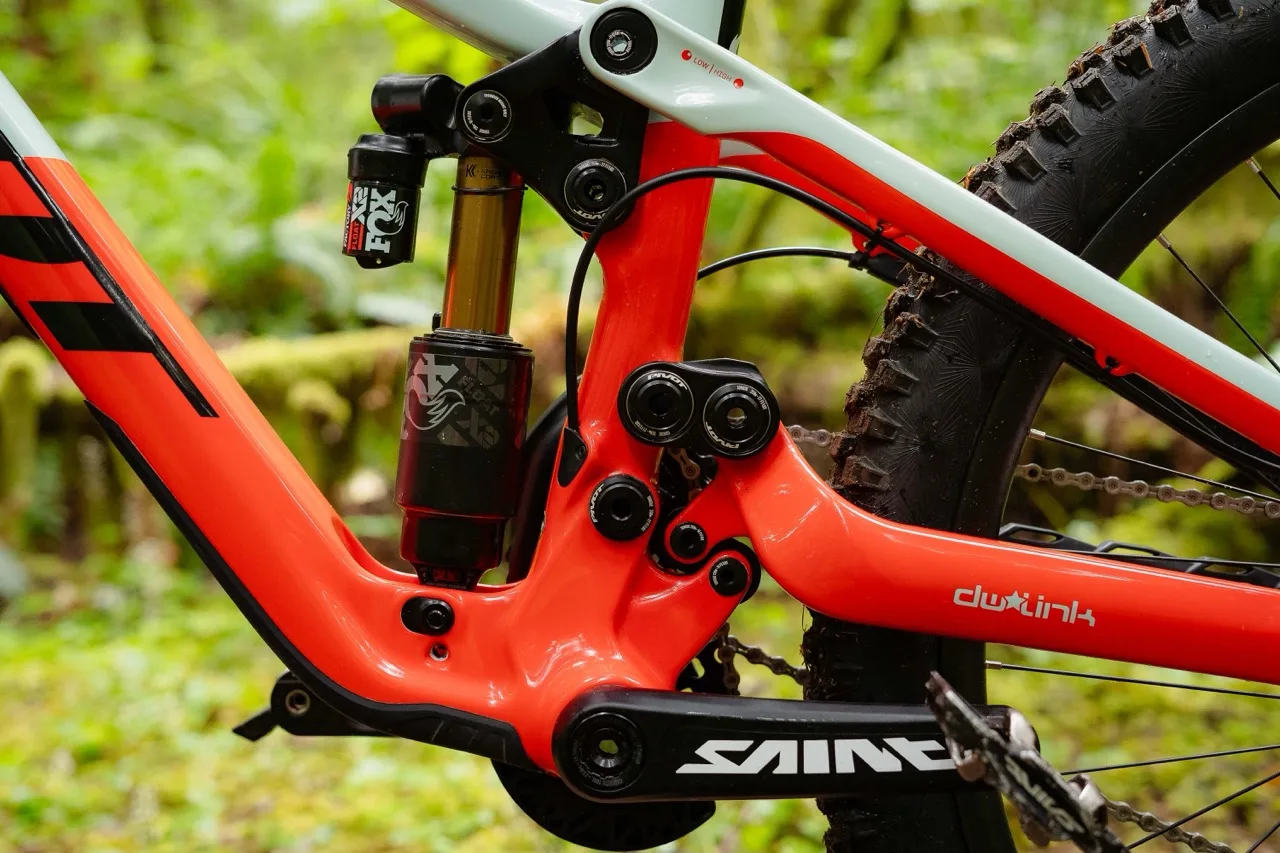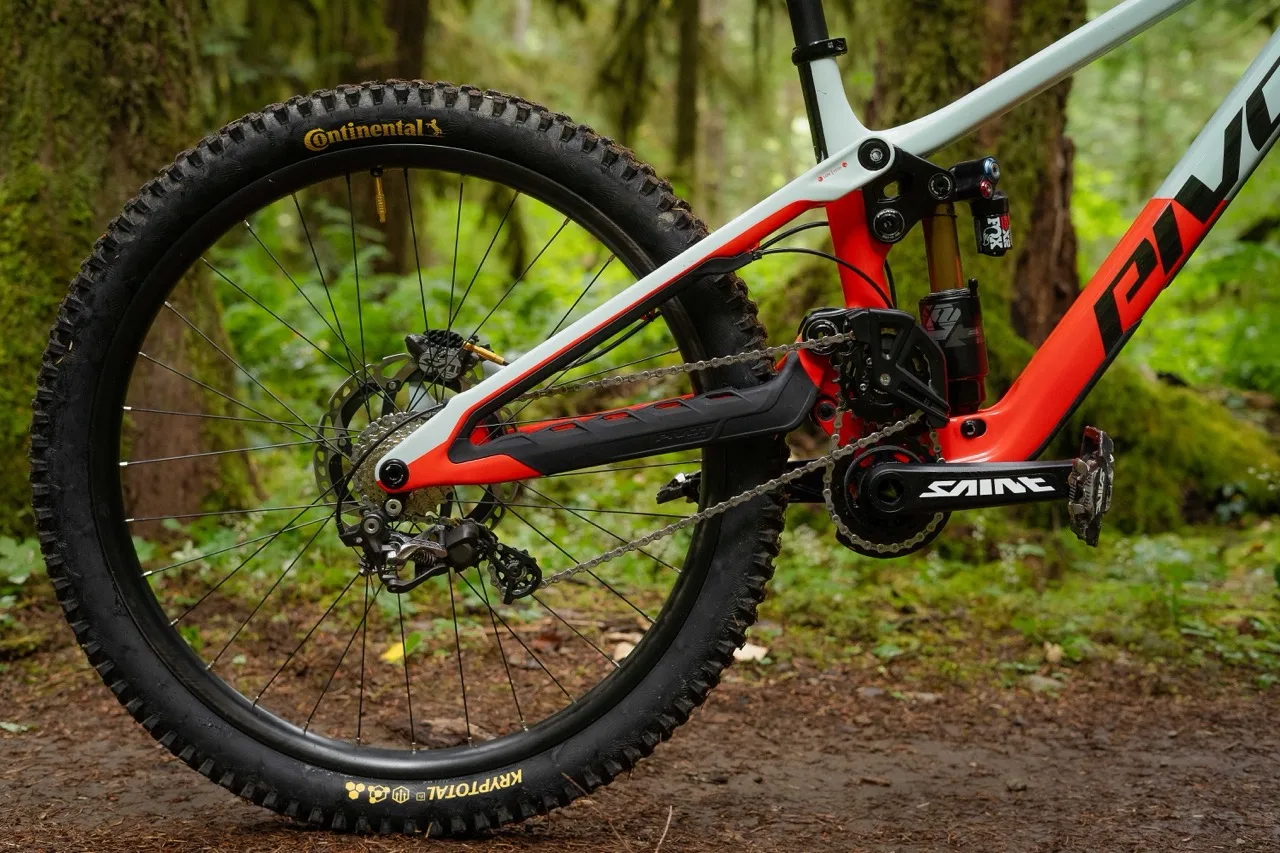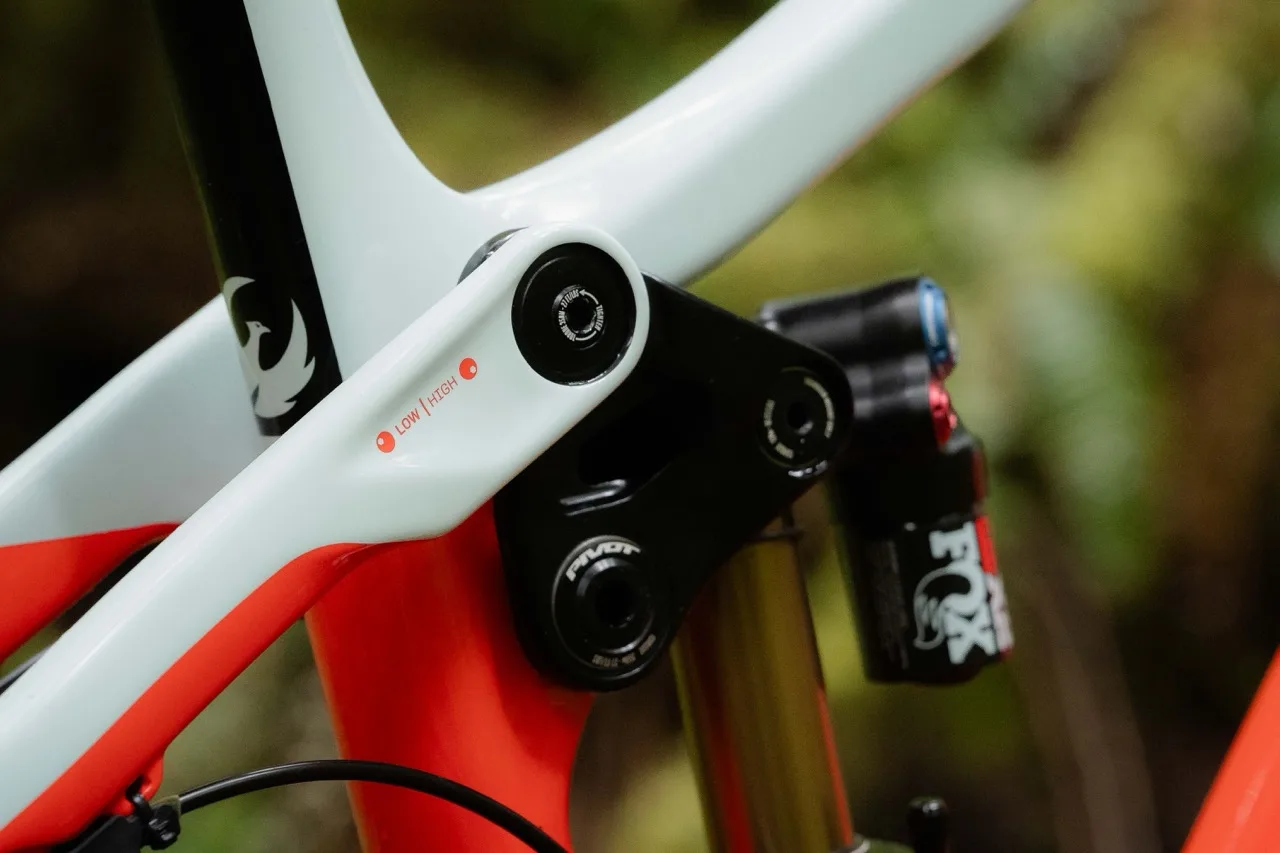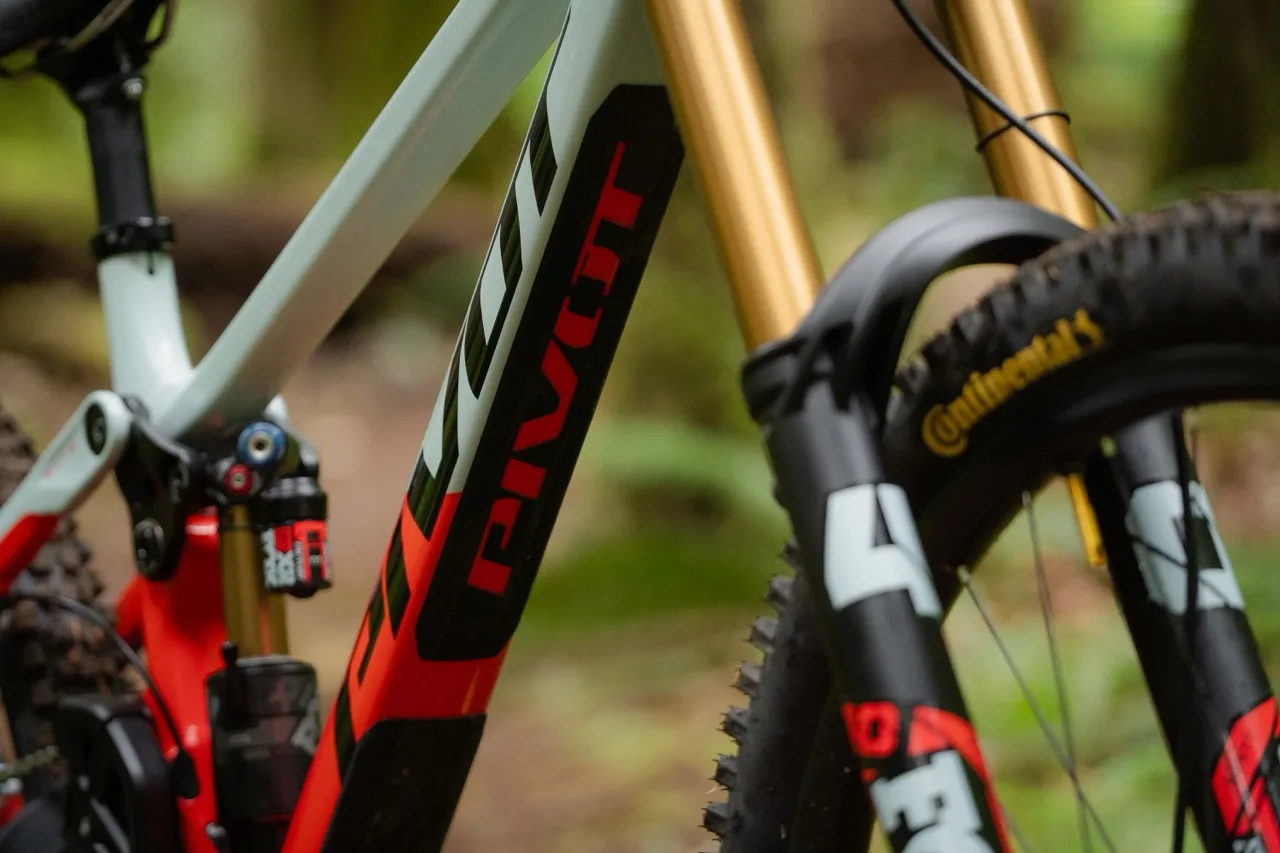It’s no secret that Pivot has been testing a brand new DH bike configuration. Their carbon/aluminum check mules have been noticed on the World Cup circuit for the previous two seasons because the Pivot design staff has obsessed over the small print as Pivot Manufacturing facility Racing actually pushed them to their limits on the observe. However after Bernard Kerr was 3 seconds sooner on the brand new bike on his very first run, even after sustaining an harm yesterday, Pivot knew they have been heading in the right direction.
Pivot’s new prototyping protocol












These prototypes are all fully constructed from scratch in Pivot’s Arizona headquarters – one thing we received to witness in particular person. Constructing them on-site offers Pivot 100% management over the design, however it additionally permits for a lot sooner adjustments to the design if wanted. That velocity of manufacturing and revision is essentially because of the carbon tube and aluminum lug design.






The purpose of the prototype development technique is to match the carbon manufacturing bikes when it comes to stiffness and efficiency. Their very first prototype turned out to be too stiff in sure areas, however some fast revisions by engineering wizard Kevin Tisue received them inside 3% of their very best efficiency targets on the second strive. With a purpose of permitting riders to hop between manufacturing bikes and prototype bikes with out noticing a distinction in how they really feel, the prototypes usually find yourself about half a pound heavier than the completed carbon variations. Transferring ahead, Pivot plans to make use of this prototyping technique on all of their bikes, not simply the DH bikes.
DW6 or dw-link?


In relation to the suspension design, Chris Cocalis, the founder and CEO of Pivot Cycles, states that originally they weren’t fully satisfied concerning the 6-bar design. With the staff struggling to inform the distinction between the 6-bar DW6 and the unique dw-link model, the trail ahead got here right down to testing. Whereas out in New Zealand, the occasions have been averaging barely sooner on the DW6 bike throughout the board. And when World Cup victories come right down to lower than a second, that barely sooner turns into crucial.
Formally, Pivot is asking this a Mid-Excessive Pivot Six-Bar dw-link suspension design. Based on Cocalis, Pivot began engaged on the design with Dave Weagle about 4 years in the past. With a extra rearward axle path, the suspension affords higher square-edge bump efficiency, however with that comes a necessity for mitigating chain progress and pedal kickback. As an alternative of utilizing a extra conventional higher loafer pully and a really lengthy chain, the Phoenix makes use of a twin chain design – one which drives the dual-idler from the chainring, and one other that drives the cassette from the dual-idler.
Not like the prototypes, the manufacturing bikes might be full carbon utilizing Pivots Proprietary Experience Tuning design which incorporates size-specific carbon stiffness tuning throughout all sizes.
Two chain design






Why two chains? Pivot claims this setup is noticeably extra environment friendly, quieter, and has much less friction and resistance, whereas additionally providing higher chain retention. The twin-idler runs on an eccentric mount which lets you simply rigidity the smaller chain, and both piece of the drive sprocket may be changed. All of it works out to a 35t equal chainring – although the crankset has a tiny 27t chainring for higher path clearance.


Initially, the higher drive unit was one piece that was very costly and tough to provide. To treatment that, the brand new dual-idler makes use of a drive sprocket that bolts to the smaller cog utilizing a SRAM 3-bolt direct mount, all made by Praxxis. There’s additionally a rubber cowl on the crank shoulder to forestall any chain slap.
MX Wheels


Whereas the earlier Phoenix was a 29/29″ DH bike, the brand new model strikes to MX wheels (and solely MX wheels) with a 29″ up entrance and 27.5″ within the rear. Between the brand new suspension design and the smaller rear wheel, Pivot was capable of enhance rear journey by 20mm going from 190mm to a full 210mm. As soon as once more, of their testing, the MX wheel setup with extra journey proved to be sooner than twin 29″ with much less.
Suspension Progressivity Flip Chip


One of many extra attention-grabbing elements of the design is how do you create a motorcycle that may be ridden by top-of-the-line riders on the earth like Bernard Kerr, however a motorcycle that’s nonetheless capable of be successfully raced by mere mortals? The reply it appears is to create a motorcycle inside a motorcycle. Pivot has given the Phoenix a Suspension Progressivity Flip Chip that adjustments nothing however the progressivity price of the suspension. Whereas Bernard will use the extra progressive setting which is predicated on his private preferences, the remainder of us will most likely use the usual setting. Bernard will get his bike, and we get ours, with the flip of a chip.
The Phoenix was initially designed and optimized round a Fox DHX2 Coil or Float X2 air shock, and full builds will both embrace the Fox Float X2 air with a Manufacturing facility 40 GripX2 fork for Professional builds, or a RockShox Vivid rear and Boxxer fork on the Experience builds. You possibly can run virtually any 225 x 75mm shock with a Trunnion higher and dM8x30 decrease mount in coil or air with the correct tune although.
Geometry




For the suspension fork, the body can run any 29″ particular twin crown DH fork with 190-203mm journey. Pivot is specing the Phoenix with a 52mm offset. They’re additionally utilizing an outsized straight head tube appropriate with 56mm ID headsets (ZS56/ZS56) which permits riders to make use of angle regulate or attain regulate headsets to fine-tune their match.
The Phoenix additionally features a +5mm/-5mm attain regulate headset and 4 body sizes (S1-S4). That enables riders to choose a body measurement by attain from 430-525mm in 5mm increments.


Geometry alterations are additionally provided by means of a flip chip on the higher suspension pivot which raises the BB from the inventory low place by 6mm and steepens the top tube angle by 1/2º.
Further body particulars




Different body particulars embrace inside cable routing by means of the downtube utilizing the Pivot Cable Port system, however be aware that there isn’t a dropper publish routing. You can run a dropper publish, however you’ll have to make use of a wi-fi dropper. The crankset is predicated on the Praxis Cadet HD with a Praxis PF92 backside bracket and it’s mated to a Tremendous Increase 157mm rear finish. Even on a DH bike, Pivot was capable of maintain normal Enduro/Path q-factors for higher pedaling effectivity.
For brake rotors, solely a 200/203mm rotor can be utilized on the rear. The entrance brake is speced with a 223mm rotor with and adapter to transform the 200/203mm publish mount.
Body safety is supplied by means of a big downtube protector with an equally massive Tailgate pad to guard virtually the total size. There’s additionally a molded chainstay/seat keep protector and built-in fork bumpers.
How a lot does it weigh?
Within the S3 measurement with cranks, the body weighs a claimed 11.29 lbs (5.1kg). The Professional construct weighs 35.36 (16kg) and the Experience construct weighs 35.98 (16.3kg) (all claimed weights).
Pricing & Colours












Pivot Phoenix DH body kits might be provided for $4,799 with a Fox Manufacturing facility Float X2 shock, Praxis DH-9 crankset, and the dual-idler pully meeting and chain. Full bikes with the Experience GX DH package will promote for $6,899, whereas the Professional Saint construct pushes to $8,499. All can be found in Black Gold or Pink Mint. Obtainable now.
Try the Pivot website beneath for extra element on spec. It’s also possible to search for the brand new bike on the final DH World Cup of the season, this weekend at Mont-Sainte-Anne!





